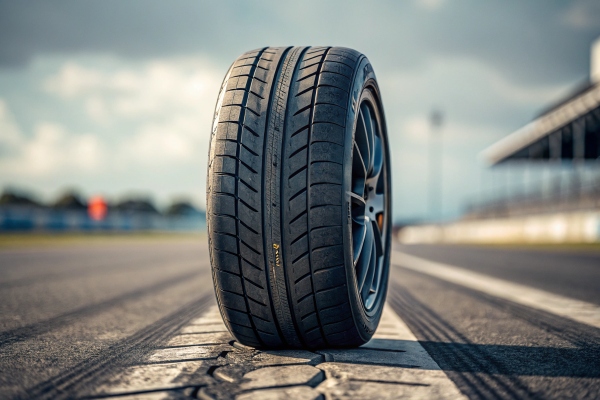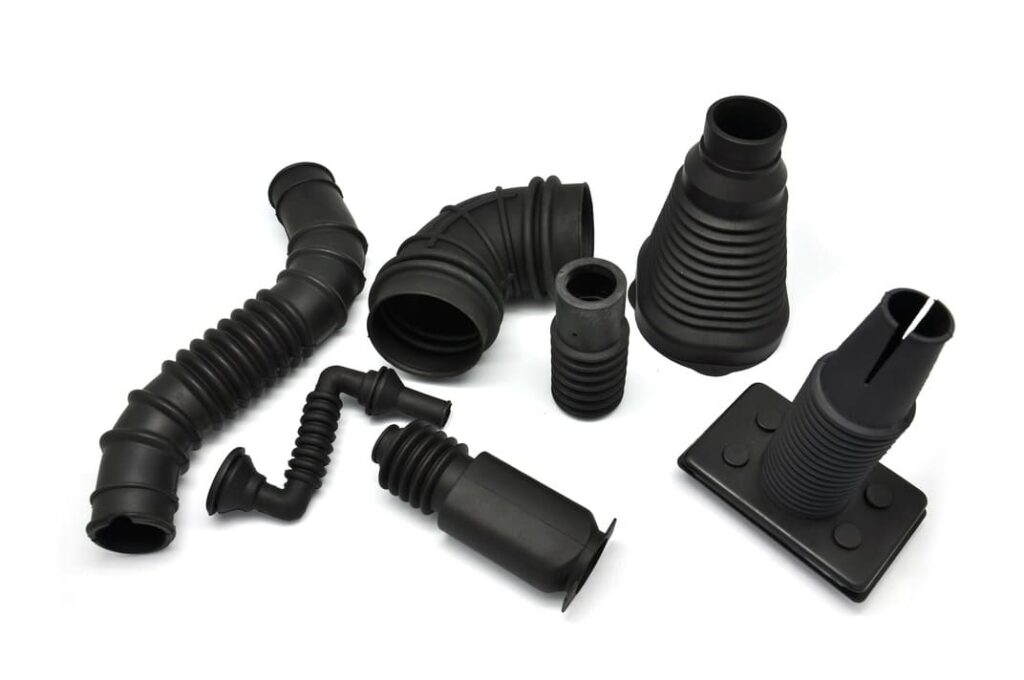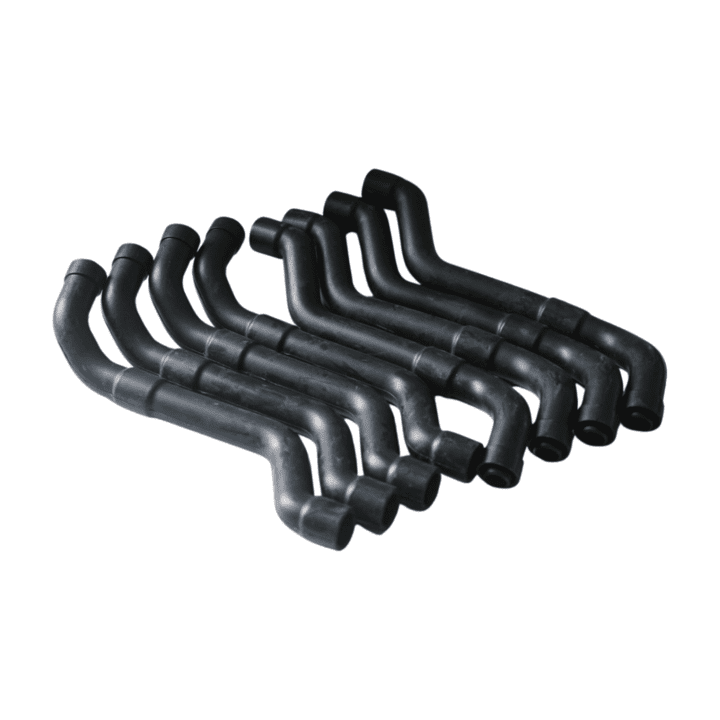Rubber is an essential material with a broad range of applications across industries. Its unique properties, such as flexibility, durability, and resistance to wear, make it a critical component in manufacturing. But which industry consumes the most rubber, and what are the driving factors behind its consumption? Let's dive deeper into the key sectors that heavily rely on rubber, with a specific focus on the largest consumer.

In this article, we will explore the largest consumer of rubber, the intricacies of its usage in the automotive industry, and the technological innovations driving rubber demand across different sectors.
Which Industry is the Largest Consumer of Rubber?
The automotive industry1 is by far the largest consumer of rubber, consuming about 70% of the total global rubber production. This high consumption rate is driven by the vast range of rubber components needed for vehicle manufacturing. Let’s take a closer look at how rubber is utilized in this sector and the technological advancements2 contributing to this demand.
Automotive Industry Rubber Usage
1. Tires
The most significant use of rubber in the automotive industry is in tire manufacturing3. Rubber provides the necessary strength, flexibility, and resilience for tires, enabling them to withstand the constant friction, heat, and pressure that vehicles encounter on the road. The two main types of rubber used in tire manufacturing are:
| Type of Rubber | Use in Tires | Characteristics |
|---|---|---|
| Natural Rubber (NR) | Tread for optimal grip | High elasticity, excellent resilience, and durability |
| Synthetic Rubber (SBR, BR) | Sidewalls and other tire components | Resistant to abrasion, heat, and aging |

Tire manufacturers are now focusing on advanced rubber compounds to improve fuel efficiency, wear resistance, and performance. For instance, nano-structured rubber compounds enhance the tire’s rolling resistance, which directly impacts fuel consumption. Additionally, sustainable tire technology is pushing manufacturers to explore recycled and bio-based rubber alternatives, reducing environmental impact while maintaining performance.
2. Seals and Gaskets
Rubber is extensively used in the automotive sector for seals and gaskets, which provide a crucial role in preventing fluid leakage and protecting the internal mechanisms of a vehicle. These rubber components are vital for:
- Engine seals to prevent oil leaks and protect from dirt and moisture.
- Door seals to provide airtight and watertight protection, ensuring passenger comfort.
- Fuel and coolant hoses made of rubber for safe fluid transport.

| Application | Rubber Component | Function |
|---|---|---|
| Engine Seals | Rubber O-rings, gaskets | Prevent oil leaks and moisture ingress |
| Door Seals | Rubber strips, gaskets | Maintain airtight and waterproof barrier |
| Fuel Hoses | Rubber tubes, silicone gaskets | Transport fuel safely, resist chemical exposure |
3. Hoses and Belts
Rubber hoses are commonly used in vehicles for carrying fluids, such as coolant, brake fluid, oil, and fuel. Rubber belts, including timing and serpentine belts, are also integral to automotive engines, ensuring smooth transmission of mechanical energy between parts.
| Application | Rubber Component | Function |
|---|---|---|
| Coolant Hoses | EPDM rubber hoses | Transport coolant fluid at high temperatures |
| Brake Fluid Hoses | NBR rubber hoses | Handle pressure without degradation |
| Timing Belts | Synthetic rubber belts | Synchronize engine components efficiently |

4. Suspension Bushings
Rubber suspension bushings are critical for reducing noise, vibration, and harshness (NVH) in vehicles. These rubber components are part of the vehicle's suspension system, providing flexibility and damping properties that enhance ride comfort and handling.
5. Noise and Vibration Control
Rubber is extensively used in sound insulation and vibration damping within automotive cabins. Rubber materials are integrated into floor mats, dashboard seals, and engine mounts to minimize noise and vibration, contributing to a quieter, more comfortable driving experience.
| Application | Rubber Component | Function |
|---|---|---|
| Floor Mats | Rubber, thermoplastic elastomer | Provide cushioning, reduce cabin noise |
| Engine Mounts | Rubber mounts | Absorb vibrations, reduce engine noise |
| Dashboard Seals | Rubber gaskets | Prevent air and sound leakage in the cabin |
Technological Advancements Driving Rubber Demand in Automotive Industry
The automotive industry’s demand for rubber is heavily influenced by the ongoing technological advancements in vehicle design, performance, and environmental sustainability. Some notable trends include:
| Technology Advancements | Impact on Rubber Demand |
|---|---|
| Eco-friendly Tires | Increased use of bio-based and recycled rubber |
| Smart Rubber Materials | Integration of sensors in tires and components |
| Lightweight Rubber Composites | Reducing vehicle weight, improving fuel efficiency |
The trend toward eco-friendly tires is encouraging manufacturers to use sustainable materials, such as recycled rubber and bio-based rubbers, to meet environmental regulations. On the other hand, smart rubber technologies, like integrating sensors to monitor tire wear and pressure, are shaping the future of rubber components in the automotive industry.
Other Significant Rubber Consumers
While the automotive industry dominates rubber consumption, several other industries also contribute to the overall demand for rubber. These sectors include:
1. Construction Industry
Rubber plays an essential role in construction applications, from sealants and gaskets to flooring and expansion joints. Key applications include:
- Bridge and road expansion joints made of rubber for movement accommodation and to reduce vibrations.
- Rubberized asphalt for durable and weather-resistant road surfaces.
- Rubber flooring used in commercial, residential, and sports facilities due to its shock-absorbing properties.
| Application | Rubber Component | Function |
|---|---|---|
| Expansion Joints | EPDM or Neoprene rubber | Accommodate structural movement and reduce wear |
| Rubberized Asphalt | Rubber-modified asphalt | Improve road durability and reduce noise |
| Flooring | Rubber tiles, mats | Provide shock absorption and comfort |
2. Medical and Healthcare Industry
The medical industry utilizes rubber in a variety of applications where biocompatibility and sterility are crucial. Common uses include:
- Rubber gloves for medical and surgical use.
- Medical tubing used for intravenous, blood, and oxygen delivery.
- Prosthetics and surgical equipment that require durable and flexible rubber components.

| Application | Rubber Component | Function |
|---|---|---|
| Medical Gloves | Latex, Nitrile rubber | Protection, comfort, and flexibility |
| Medical Tubing | Silicone, EPDM rubber | Fluid transport, chemical resistance |
| Prosthetics | Silicone rubber | Molding for prosthetic limbs, biocompatible |
3. Electronics and Electrical Industry
Rubber plays an essential role in protecting electronics from environmental factors such as moisture, heat, and dust. It is used in:
- Cable insulation to prevent electrical shock and signal interference.
- Rubber seals for electronic devices and connectors to ensure durability in harsh conditions.

| Application | Rubber Component | Function |
|---|---|---|
| Cable Insulation | PVC, Rubber-based compounds | Prevent electrical leakage and mechanical damage |
| Seals and Gaskets | Rubber seals | Protect against moisture, dust, and pressure |
4. Consumer Goods and Industrial Applications
Rubber is used in a variety of consumer goods and industrial products, including:
- O-rings, gaskets, and seals used in industrial machinery and fluid systems.
- Rubber bands, footwear, sports equipment, and machinery components.
| Application | Rubber Component | Function |
|---|---|---|
| O-rings & Seals | Nitrile, EPDM rubber | Sealing and preventing fluid leakage in machinery |
| Sports Equipment | Latex, Synthetic rubber | Durability and flexibility in balls, mats, etc. |
| Machinery Components | Neoprene, Nitrile rubber | Durability, chemical resistance in mechanical parts |
Conclusion
The automotive industry is the largest consumer of rubber due to its extensive use in tires, seals, gaskets, and other automotive components. Technological advancements in tire production, noise and vibration control, and sustainable materials continue to drive demand for rubber. However, other sectors like construction, healthcare, and electronics also significantly contribute to global rubber consumption. As rubber remains an essential material across multiple industries, its consumption patterns will continue to evolve with technological and environmental trends.







